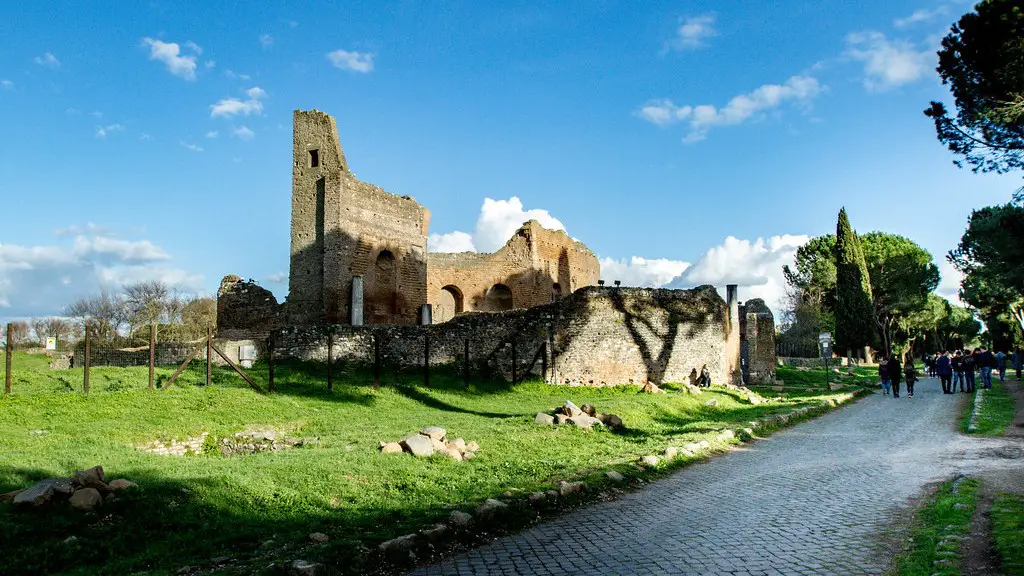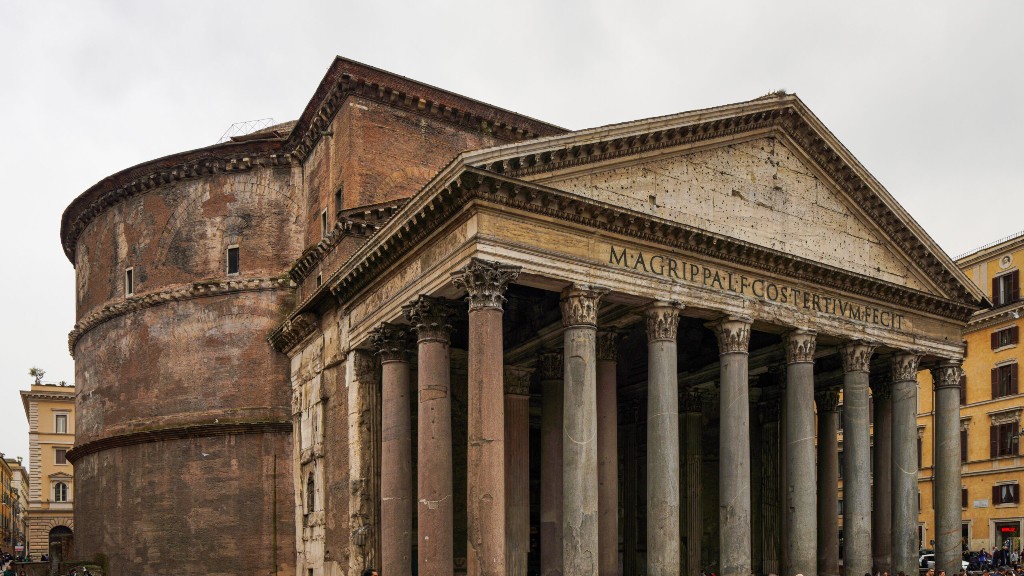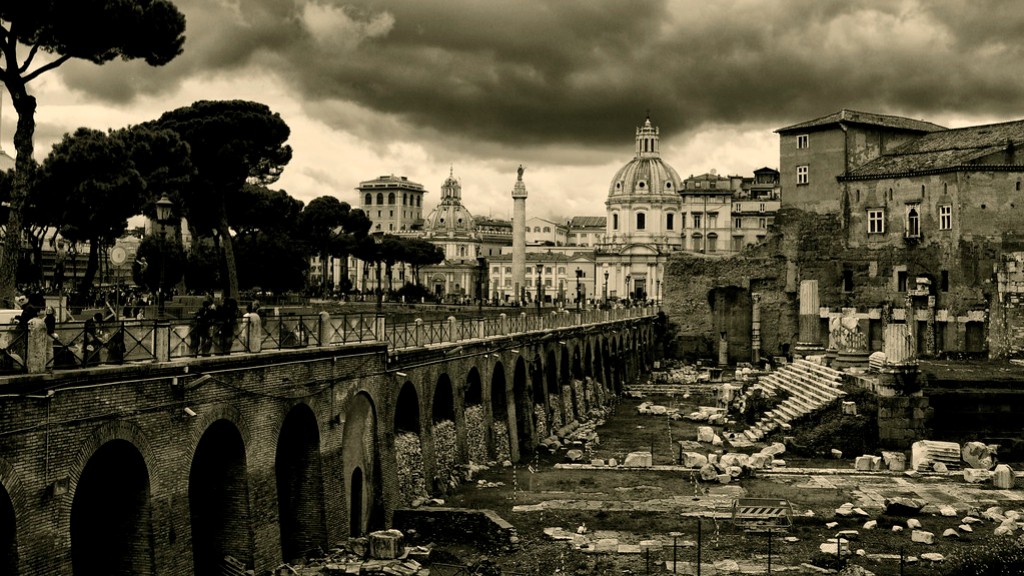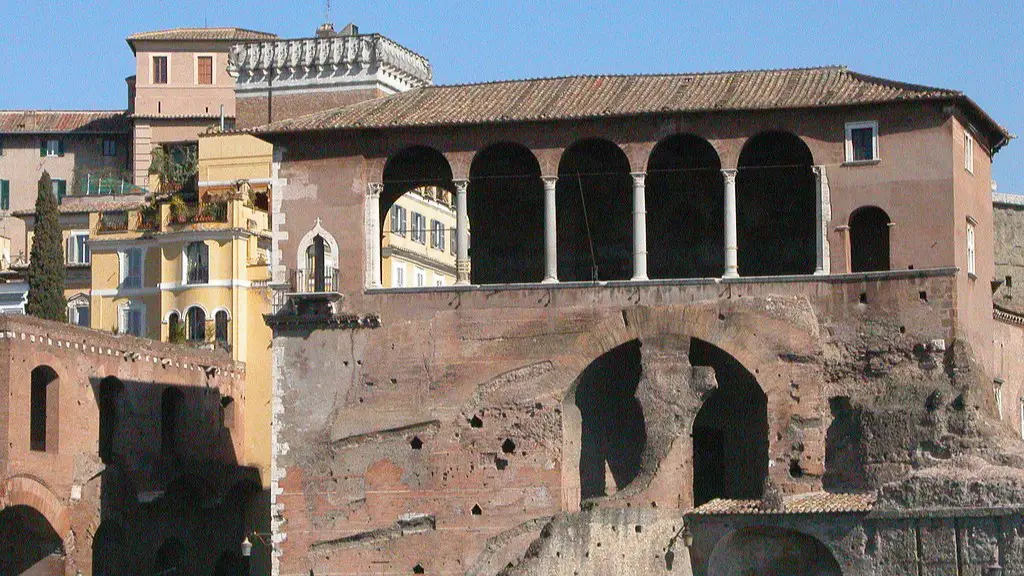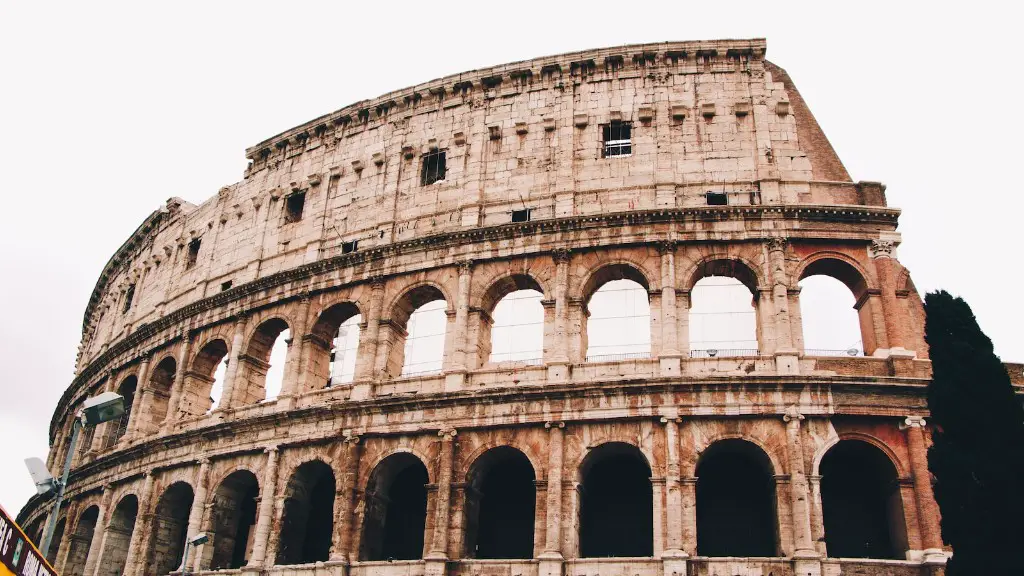Ancient Rome is a fascinating and complex era of history, and it is no wonder that it has been studied extensively by historians and archaeologists from all over the world. While many people today recognize the impact of Rome’s politics and military on the world, few realize the wealth and power of the Roman economy that had been built through trading and commerce.
The Romans had a very sophisticated system of trade which enabled them to acquire goods from all over the Mediterranean and beyond. There were trade routes connecting Rome to ports in Northern Africa, Asia Minor, and even Britain. This allowed the Romans to purchase goods from faraway places, such as silk from China, spices from India, and exotic animals from Africa. These items were highly sought after and fetched a high price.
The most commonly traded item in Ancient Rome was wine. Grapes grown in Southern Italy were made into wine which was then transported to the Roman markets. It was highly valued both as a beverage and as an ingredient in many dishes. In addition to wine, olive oil was also an important export, as it was used to flavor food, light lamps and as a medicinal remedy.
Iron was also an important commodity in Ancient Rome. Iron ore was mined from the hills of Northern Italy and reduced into sheets for weapons and tools. It was also used for construction and to make coins. This gave the Roman Empire a great advantage over their rivals, as they were able to supply the entire empire with their own iron supplies.
The Romans were avid sailors and took advantage of their access to the Mediterranean Sea by trading goods with other countries. They imported a variety of items such as marble, tin, glass, and gold. They also exported products such as wheat, cheese, wool, slaves, and wood. As the empire expanded, the Romans had access to more trading possibilities.
Slaves were another highly traded item in Ancient Rome. They were acquired from conquered territories and used as laborers on farms or in businesses. Slaves provided a cheap labor force and a way for the wealthy elite to indulge their desires for luxury goods or slaves for entertainment.
The Roman economy was largely based on the goods the Romans traded with other countries. They had access to a variety of goods from all parts of the world which allowed them to build a strong and powerful empire. While the Roman economy underwent many changes over the centuries, this trade system was one of the foundations on which Rome’s power and greatness was built.
Grain
Grain was an important commodity traded in Ancient Rome. Grain was grown in the lush and fertile countryside of Italy and exported to ports around the Mediterranean. It was used both as a source of food, and as a form of payment. Grain was also vital to Rome’s military campaigns, as it was necessary to feed both the soldiers and the horses.
Grain was traded in a variety of ways. It could be exchanged for goods or services. It could also be sold and bought on the open market. This made it an important item in the Ancient Roman economy.
Grain not only provided food but it also became a form of currency during the empire, as it was easily transportable and kept its value. Since grain was so widely traded, the price of grain was an important indicator of the health of the Roman economy.
Grain was a commodity which allowed the Romans to gain access to foreign markets and expand their network of economic allies and trading partners. It allowed them to increase their wealth and power which enabled them to maintain control over the entire Mediterranean region.
Grain was integral to the success of the Roman Empire and its economy, and it still plays an important role in the economy of today.
Animals
Animals were an important commodity in Ancient Rome, and they were traded both domestically and internationally. Cattle, horses, sheep and other animals were used to create vast herds which enabled farmers to cultivate their land and produce food for a growing population.
In addition to being used as food and for labor, animals were also bred for entertainment. Exotic animals like lions, tigers and elephants were highly sought after and were used for gladiator combat and for performances at the Circus Maximus.
The animals that were traded in Ancient Rome had a direct effect on the economy. By trading animals, the Romans were able to create a strong and vibrant economy, as the animals provided a source of wealth and goods to be used in commerce.
Animals were also used as currency and bartering chips, and they were essential to Rome’s military campaigns. Not only did they serve as food, but they were also used to carry supplies and goods to the battlefield, in addition to providing riders with mounts.
Animals were integral to the success of the Roman Empire, and they are still essential to economies around the world today.
Luxury Goods
Luxury goods were highly sought after in Ancient Rome, as they provided a way for the wealthy elite to flaunt their status. Some of the luxury goods that were traded in Ancient Rome included jewelry, perfumes, silks, exotic spices, and other decadent items.
These goods were highly prized, and the demand for them led to the creation of a lucrative trade network between the Roman Empire and its neighbors. This enabled Rome to acquire goods from many different countries, which allowed them to maintain a stable and powerful economy.
The trading of luxury goods also had a significant cultural impact, as it enabled Roman elites to gain access to goods that had previously been out of reach for them. This gave them a sense of superiority which is still evident today in the way wealthy individuals dress, speak, and carry themselves.
Luxury goods were a vital part of Ancient Rome’s economy, and they still remain an important aspect of the global economy today.
Gold
Gold was highly valued in Ancient Rome, and its scarcity made it a sought-after commodity. Gold was mined from the mountains of Northern Italy and was used to create coins and jewelry. Gold coins, called aurei, were used for payment and taxes, and they were a symbol of wealth and status.
Gold was also used to fund military expeditions and public works, and it was essential to the stability of the Roman economy. The price of gold fluctuated depending on the supply and demand, which enabled the wealthy to take advantage of the changing market.
The acquisition of gold allowed the Romans to build alliances with foreign countries and form diplomatic relationships with foreign powers. Gold was essential to the success of the Roman Empire, and it still remains an important economic asset today.
Slaves
Slaves were another highly valued commodity in Ancient Rome. They were acquired from conquered territories and used for labor on farms or businesses. Slaves provided a cheap labor force and provided a way for the wealthy elites to indulge themselves with luxury goods or slaves for entertainment.
The trading of slaves in Ancient Rome had a significant social and economic impact. It provided the wealthy with a steady and cheap source of labor, and it allowed them to amass great wealth and power. Slaves also provided a form of currency, as they could be used to pay debts or to purchase goods.
The slave trade was an essential part of the Roman economy, and it is estimated that up to one-third of the population in Rome was made up of slaves. The slave trade was integral to the economic success of the Roman Empire and its legacy is still felt today.
Exotic Animals
Exotic animals were highly sought after in Ancient Rome, as they provided a source of entertainment and display of wealth. Lions, tigers, and elephants were all traded in Roman markets, and they were highly sought after by the wealthy elite.
The acquisition of exotic animals was a way for the wealthy to express their power and status, and it was also used as a form of currency. They could be used to pay debts, or to purchase goods or services.
Exotic animals were traded both domestically and internationally, and this contributed to the wealth of the Roman Empire. The trading of exotic animals allowed them to gain access to foreign markets, build relationships with foreign powers, and increase their wealth and power.
Exotic animals were a crucial part of Ancient Rome’s economy, and they are still essential to economies around the world today.
